- Home
- William Shakespeare
Henry V Page 16
Henry V Read online
Page 16
Charles Kean's productions at the Princess' Theatre were noted for their historical accuracy and spectacular staging and effects. Henry V was his final production there in 1859. His wife, Ellen Tree, played the part of the Chorus in the persona of Clio, the Muse of History; Kate Terry played the Boy. The scenery was "accurate and beautiful," but the dramatic highlight was the siege of Harfleur--"in sooth, a stirring spectacle, full of the terror and noise of battle"5--employing 212 people.6 The performances were generally praised:
One great charm of the performance was ... the really grand manner in which Mrs Kean declaimed the choruses. The part of King Henry V was exquisitely acted by Mr Kean. His elocution in the war orations, and his familiar delivery in the less heroic scenes, were governed by the most correct taste and judgement.7
Charles Calvert's production at the Theatre Royal, Manchester, in 1872 successfully toured America before finally going to London in 1879. Theater historians regard this as the first production to acknowledge the anti-war aspects of the play.8 Calvert himself had raised funds for the victims of the Franco-Prussian war and sympathy for the French became permissible, hence Henry's threats before the walls of Harfleur were restored and the executions of the traitors, Bardolph, and the French prisoners. He retained Kean's dramatic representation of Henry's return to London, but, "[i]n contrast to Kean's heroic pageant, Calvert's production was informed by a realistic attitude to war shaped by contemporary events."9 The part of Henry was played by the exceptionally handsome English actor George Rignold, of whom one critic claimed: "Every susceptible girl in those days bought a photograph."10
He rode onstage on a white horse called Crispin in the battle scenes. Henry James thought Rignold made "a very charming impression," but went on to criticize the contemporary fashion for theatrical spectacle, believing it to be "founded on a fallacy. Illusion, as such an enterprise proposes to produce it, is absolutely beyond the compass of the stage."11
Despite this, the first all-American production directed by Richard Mansfield, who also played Henry, at the Garden Theater in 1900 was an equally spectacular affair in which, following Kean's example, Mansfield trusted
not to the quick forge and working-house of thought, but to the improvement in stage machinery and the love of visible motion which dwells within the human breast. The whole fourth act, in this arrangement, was a scene in a London street, where the populace hailed the arriving troops, marching in battalions, with crossbows, pikes, and lances, passing rapidly forward through an arch in the rear and off through the crowd to the side. Now and again a soldier was joined by his wife or by a waiting maiden, and amidst the excitement of it all the harder side of war was suggested by one woman's fate; she rushed among the soldiers to ask one question, and then was carried senseless from the ranks. A dance of girls with flowers was one feature of the pageant, which ended with the entrance on the stage of King Henry on his battle horse.12
Frank Benson produced the play at Stratford with himself as Henry sixteen times between 1897 and 1916 (Lewis Waller played the part in 1908), in a production which, against the background of the Boer Wars and First World War, emphasized the play's patriotism; indeed, it is argued that presentation of the play acted "as a recruiting poster."13 It provided "many fine and thrilling moments ... though some considered a dance of the two scantily attired young ladies in the French camp to be in bad taste."14 The "fine and thrilling moments" included Benson's "pole-vault in complete armour on to the walls of Harfleur," a feat which he enjoyed performing into "late middle age."15 Between 1901 and 1906 the play formed the centerpiece in Benson's cycle of history plays, which included King John, Richard II, Henry IV Part I, Henry V, Henry VI Part II, and Richard III.
William Poel's production in 1901 with the Elizabethan Society in Burlington Gardens was the first to use the full text of Shakespeare's play since the seventeenth century and to attempt to reproduce Elizabethan staging conditions. Playing a fuller text revealed the play's complexity and allowed its ambiguities to emerge. Poel went on to direct a performance with Ben Greet's company at Stratford. Both William Bridges-Adams at Stratford and Robert Atkins at the Old Vic directed the play in 1920 with a female Chorus, an uncut text, and minimal scenery. There were regular revivals throughout the 1920s and 1930s: at the Old Vic in 1926 with Baliol Holloway as Henry, the Lyric Hammersmith in 1928 with Lewis Casson, Ralph Richardson at the Old Vic in 1931, Godfrey Tearle at the Alhambra in 1934, Hubert Gregg at the Ring, Blackfriars, in 1936, Laurence Olivier at the Old Vic in 1937, and Ivor Novello at Drury Lane in 1938 in a production in which Henry "and his staff at Southampton ... were in a ship that moved offstage from the quayside, very much in the Charles Kean style."16
Despite the continuing sense of the play as a "recruiting poster," Henry became less heroic and more human, as the critic James Agate recognized in his review of Ralph Richardson's Henry at the Old Vic: "one saw the actor's intention, which was to present Harry as a human being and not as a mailed fist, eating and sleeping and thinking in armour."17 In his autobiography Laurence Olivier records how, when he took on the role in Tyrone Guthrie's 1937 production, he tried to find ways of deliberately undercutting the heroic tradition of the part but felt he was only partially successful.18 Reviews were mixed; one critic describing it as "a pacifist tract" in which the archbishop "became an unprincipled cleric driving a well-meaning young man into a course which his conscience disapproved."19 He "objected to Olivier's display of troubled thoughtfulness" on the grounds that "what is needed 'is straightforward, dashing rhetoric, and no nonsense about the ethics of war.' "20 This production was to form the basis of his popular, influential 1944 film.
Paul Scofield deliberately underplayed Henry in the 1946 Stratford production that was considered "lacking in fire and better in the quieter moments."21 In 1951 Anthony Quayle, Michael Redgrave, and John Kidd staged a cycle of the four plays of the second tetralogy, comprising Richard II with both parts of Henry IV and concluding with Henry V. This decisively influenced response to the plays as an exploration of the politics of kingship. As one critic suggested, "One will never again think of these plays as single entities, and when they are played as such we shall feel them to have been lopped."22 Not all critics were convinced by the strategy, though, and Richard Burton's Henry was compared unfavorably with Alec Clunes' performance at the Old Vic earlier that same year:
1. Stratford, 1946: a young Paul Scofield, with Ruth Lodge as Katherine, in the wooing scene.
At almost every point--the most notable exception being the scene of the three conspirators, presented at Stratford with rare concentration--the Old Vic led, for the simple reason that the play had there no strings to it and could be left to unroll without constraint its extraordinary variety of turns--romance and philosophy, high comedy and slapstick, melodrama, music-hall, epic. Thus unbuttoned it has a size and an immediacy that as the peroration to a political treatise it must forgo, a sparkle and verve that are lost when it is trimmed to fit a tetralogy.23
The majority of RSC productions since then (discussed in detail below) have continued to stage Henry V as part of a grand historical cycle, frequently staging the second tetralogy in conjunction with the three Henry VI plays and Richard III of the first. Critics, however, continued to resist "this fresh approach," feeling "cheated that they had not been offered a noble, tall, martial, uncomplicated, clarion-voiced ideal king--the figure that Lewis Waller and Olivier stamped on the first half of the century."24
Michael Langham directed Henry V in his first season at the Stratford Ontario Festival in 1956 in a production which focused on Henry's development as king. It was praised for the way in which "The pageantry and elaborate action were finely subordinated to this main concept, and it was a pleasant change after the Henry made familiar through Sir Laurence Olivier's film who, in moments of crisis, ceased to be a man and became an embodiment of heroic kingship."25 Not all the critics were so convinced by Christopher Plummer's Henry, and Olivier was again the yardstick: "Christopher Pl
ummer, as the King, gave a convincing imitation of Lawrence [sic] Olivier, which occasionally became an interpretation in its own right."26 Critics were also divided over the decision to cast French Canadians as the French, and their views reflect how the play's patriotic appeal can easily be co-opted. While one thought it a "serious blunder ... to entrust the French parts to French Canadians with thick accents" which "destroyed all the Dauphin's superb poetry and made the elegant French nobles sound like a collection of recently arrived refugees, strenuously talking English--the last thing such proud peacocks would dream of being or doing,"27 another considered it
a masterly stroke on the part of Mr Langham to cast our French-speaking actors in the French parts in this play. Their physique, their very bones, spoke of a heritage different from that of the English nobles; their elegance came from within ... In this production something exclusively Canadian was brought to the service of that national culture which we are so often assured we lack, and in the final scene of French and English reconciliation a Canadian audience may be excused for wiping its eyes.28
There were two English productions in 1960, both of which focused on the grim realities of war. John Neville's at the Old Vic was noted for its Mother Courage wagon and "crude, tub-thumping patriotism,"29 while Julius Gellner's at the Mermaid featured:
Battledress and boots, 15-pounders and barbed wire, interpolations of "Get fell in, you 'orrible men," revolvers and sandbags, films of the Eighth Army advancing through the Alamein minefields, and more film of the VE-Day celebrations, bangs and screams and whistling shells.30
A radical German 1964 production in Bremen entitled Henry Hero and played in First World War costumes portrayed the king as "a cynical, bullet-headed thug who delivered the exhortation on the eve of Agincourt not to his generals but to a French whore with whom he is in bed ... To ensure that the audience made no mistake in its attitude to Henry there was a backcloth adorned with painted heads of leaders from Attila the Hun to Elvis Presley."31 Langham's 1966 production at Stratford Ontario was more skeptical than his earlier production, with a less charming Henry played by Douglas Rain as "a hard man always on the verge of failure, shouldering his burden of kingship with reluctance, a plodding man so troubled by growing worries as to move almost into paranoid isolation."32 Most critics found Michael Kahn's 1969 production at Stratford, Connecticut, "a crude anti-war tract" in which the "Brechtian devices of using titles to announce segments of the action ... worked all too effectively in alienating the audience."33 The reaction against the conventional view of the play as a patriotic pageant seemed to many to have gone too far in the opposite direction.
Joseph Papp's 1976 production at the New York Shakespeare Festival, however, provided a
splendidly handsome military spectacle with banners that flutter, torches that flare, and guns that go boom ... The Battle of Agincourt, "choreography by Lee Breuer" and "combat by Erik Fredericksen" is the biggest production number since "Shanghai Lil," with processions before and after, mass combat, single combat, one of those moments where everyone freezes, a slow-motion sequence, broadsword fighting, pike work, a brilliant flight of arrows, and God knows what more.34
Paul Rudd's Henry was seen as solid and conventional rather than inspiring, but one critic confessed that Meryl Streep (playing Katherine) "finds more in the part than I had ever known was there."35 Michael Bogdanov's English Shakespeare Company's 1986 production presented the play in the light of 1980s English culture: "Michael Pennington's king was a cold, conniving unappealing Tory patronising a rag-tag army of public school chaps barely in control of a lower order of yobs and petty crooks."36
Directors since then have struggled to find ways to combine contemporary views of war with the historical view of the play as a celebration of patriotism and national pride; of a sympathetic Henry, "the mirror of all Christian kings," with the ruthless politician. John Wood's 1989 production at Stratford Ontario was set just pre-First World War and recapitulated the experience of a nation which went naively into a war in which youthful optimism was rapidly overcome by grim reality, embodied in the king's personal journey from boyish enthusiasm to hard-won maturity.
The first French production of the play was Jean-Louis Benoit's triumphant French-language version in 2000 in which
a Chorus in a bright orange wig and twentieth-century gamin costume (Laure Bonnet) emphasizes the use of a wooden wheel lying flat stage centre, a literal "Wooden O" on to which characters step out of the action to address us directly ... Not only the Chorus, but the Heralds, are women, cross-dressed ... The playing style is broad, making cartoon characters of the old English enemy.37
Against this the English king "is in a different play, and remains there through five acts." The languages were reversed for the language lesson, and in the final act Philippe Torreton as Henry and Marie Vialle as Katherine moved so rapidly between English and French that the audience were "whirled from one pretence to another," turning the romantic interlude into "an ironic send-up of romantic interludes" in which "only the Dauphin's disappointment spoils the fun."38
The National Theatre's first production of the play in 2003 was Nicholas Hytner's first as artistic director, as discussed in his interview below. It was updated to suggest contemporary parallels with the war in Iraq:
Hytner's battle-dress production is not only much darker, but also more divided, with different versions of events fighting for the upper hand. Penny Downie's Chorus--an insinuating spin-doctor in high heels--announces "All the youth of England are on fire" as the poor old low-lifes appear, staring gloomily at their pints and the telly.39
Adrian Lester's Henry--the first black actor to play the part--was seen as "a triumph of colour-blind casting."40 Hytner's politicized version was frequently compared with Mark Wing-Davey's Dela-corte Theater production in New York's Central Park of the same year:
The current National Theater production of Henry V in London, directed by Nicholas Hytner, coolly and critically suggests parallels between Henry's war against the French and the war in Iraq. Whatever his intentions, Mr Wing-Davey has devised a Henry V that shirks from seriousness on the unavoidable subjects of war and patriotism.41
Henry James' remark that the "Illusion" required to mount a realist production was "absolutely beyond the compass of the stage"42 does not apply to cinema, and there have been two remarkable and successful films. Laurence Olivier's 1944 version, set against the background of the Second World War and dedicated "To the Commandos and Airborne Troops of Great Britain the spirit of whose ancestors it has been humbly attempted to recapture in some ensuing scenes," was enthusiastically received, winning four Oscars:
Laurence Olivier's screen version of Henry V represents a memorable cinema event. It is not the dramatic quality of the play nor the high standard of the acting which makes a deep impression so much as the rare pleasure of hearing in the cinema beautiful lines beautifully spoken. The stylised sets, the painted landscapes, the technical devices which transport us from the boisterous intimacies of the Globe Theatre to Harfleur and the Field of Agincourt, all these have aesthetic and dramatic justification, yet it is such lines as those spoken before Agincourt which leave us feeling that something new has happened in the cinema.43
The film's "continuing appeal" has been defined as "its capacity to activate a kind of double nostalgia: for the fairy-tale feudalism it celebrates, but also for the wartime history which permeates the film, from the opening dedication to the troops onwards."44 Kenneth Branagh's 1989 adaptation was by contrast "pictorially low-key" and "made for a generation that has the Indo-China war and the Falklands campaign just behind it and is wary of calls to arms."45 Olivier's film represented a constant critical touchstone, and comparisons were inevitable:
Olivier's Chorus, clad in doublet and hose, leads his audience from the Wooden O of the Thameside Globe into an attractively colourful England and France ... Branagh's Chorus (Derek Jacobi), dressed in black overcoat and muffler, takes us from a movie studio into a murky pala
ce where the courtiers look as if they've been painted by Holbein at his cruellest, or photographed in unflinching close-ups by Richard Avedon.46
Much grittier than Olivier's film, nevertheless film historian Kenneth Rothwell argues that "Kenneth Branagh's Henry V is, and will be recognized as, one of the outstanding Shakespeare movies of the century."47
AT THE RSC
Reality and Myth
Largely through Shakespeare, a King who was an unpleasantly ruthless fanatic who liked nothing better than burning heretics became what Hazlitt called "the favourite monarch of the English nation," much cited whenever England was under attack.48
Henry V is a play at the mercy of the society and time in which it is produced. This is strongly evidenced by the "swing of 180 degrees, from patriotic heroism to bitter irony"49 after the Second World War:
As the dramatist John Arden once pointed out, it is as if there is a sceptical unofficial play beneath the patriotic official one. We get to know the braggarts and the victims, the would-be war-profiteers and the common soldiers who suspect they will die in an unjust cause. We also hear a great deal of questioning and self-questioning.50
It is only in the last fifty years that we have seen this emphasis on the "unofficial play," prompted by a radical shift in the way people think about national identity, politics, and ideas of heroism:

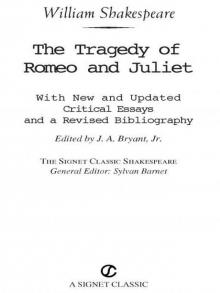 Romeo and Juliet
Romeo and Juliet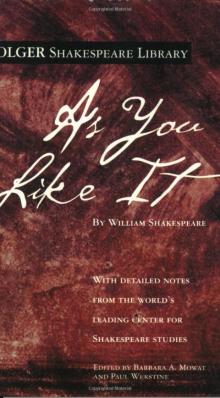 As You Like It (Folger Shakespeare Library)
As You Like It (Folger Shakespeare Library)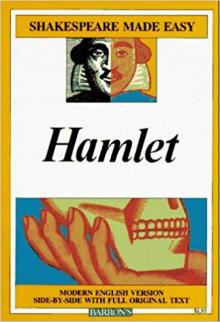 Hamlet
Hamlet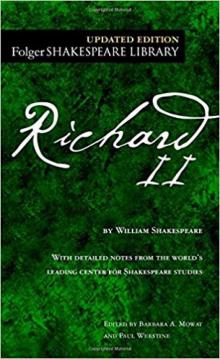 Richard II (Folger Shakespeare Library)
Richard II (Folger Shakespeare Library) Macbeth
Macbeth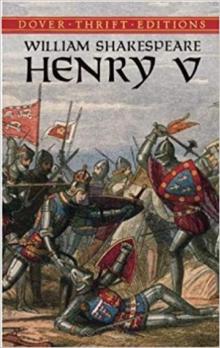 Henry V
Henry V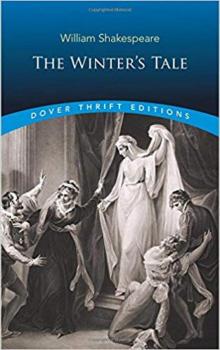 The Winter's Tale
The Winter's Tale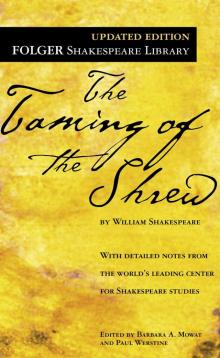 The Taming of the Shrew
The Taming of the Shrew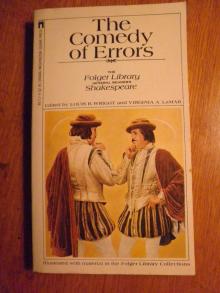 The Comedy of Errors
The Comedy of Errors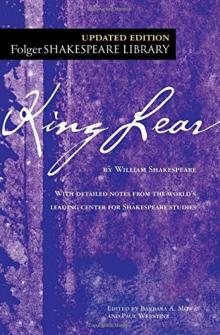 King Lear (Folger Shakespeare Library)
King Lear (Folger Shakespeare Library)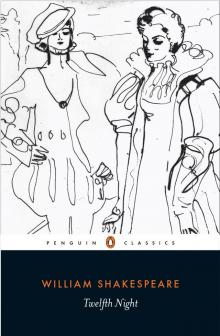 Twelfth Night
Twelfth Night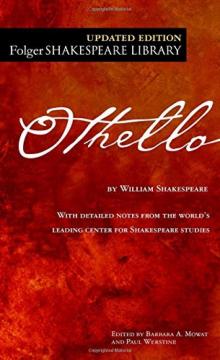 Othello
Othello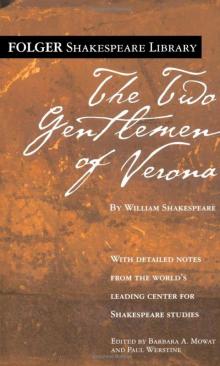 The Two Gentlemen of Verona
The Two Gentlemen of Verona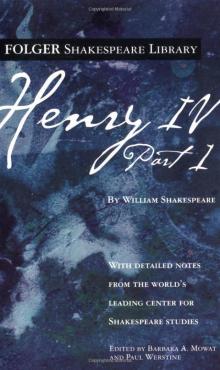 Henry IV, Part 1 (Folger Shakespeare Library)
Henry IV, Part 1 (Folger Shakespeare Library)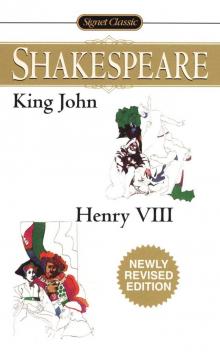 King John/Henry VIII (Signet Classics)
King John/Henry VIII (Signet Classics)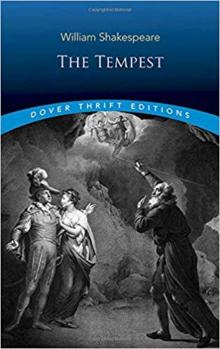 The Tempest
The Tempest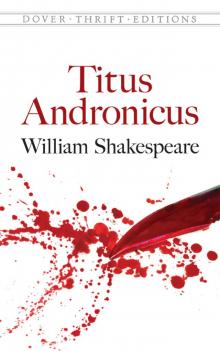 Titus Andronicus (Dover Publications)
Titus Andronicus (Dover Publications)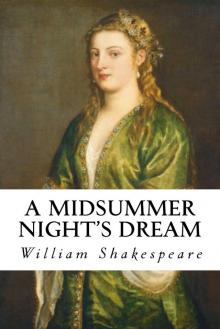 A Midsummer Night's Dream
A Midsummer Night's Dream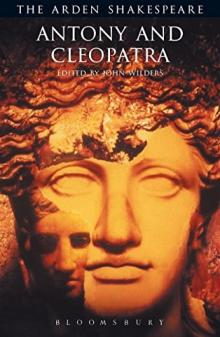 Antony and Cleopatra (Arden Shakespeare: Third Series)
Antony and Cleopatra (Arden Shakespeare: Third Series)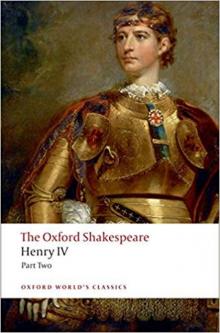 The Oxford Shakespeare: Henry IV, Part 2 (Oxford World's Classics)
The Oxford Shakespeare: Henry IV, Part 2 (Oxford World's Classics)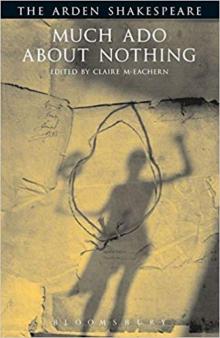 Much Ado About Nothing (Arden Shakespeare: Third Series)
Much Ado About Nothing (Arden Shakespeare: Third Series)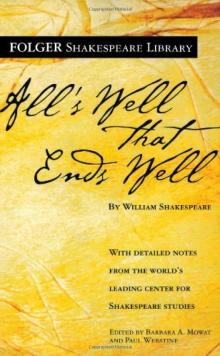 All's Well That Ends Well
All's Well That Ends Well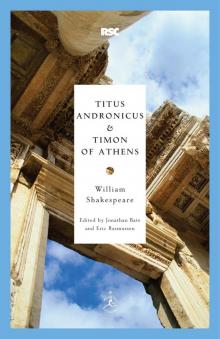 Titus Andronicus & Timon of Athens
Titus Andronicus & Timon of Athens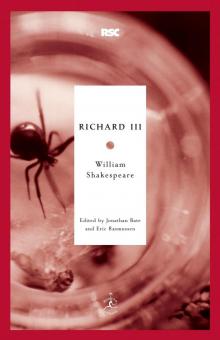 Richard III (Modern Library Classics)
Richard III (Modern Library Classics)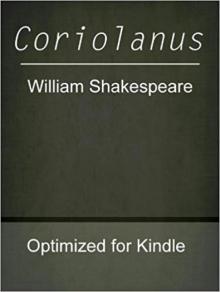 Coriolanus
Coriolanus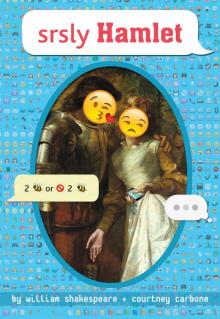 srsly Hamlet (OMG Shakespeare)
srsly Hamlet (OMG Shakespeare)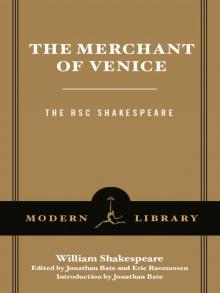 The Merchant of Venice
The Merchant of Venice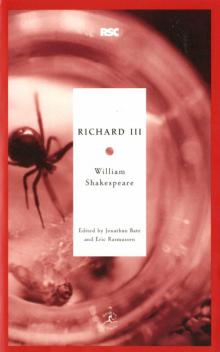 Richard III
Richard III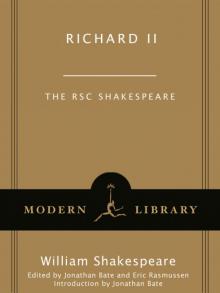 Richard II
Richard II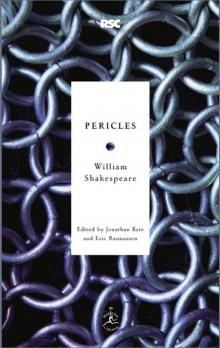 Pericles
Pericles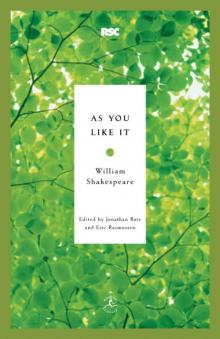 As You Like It
As You Like It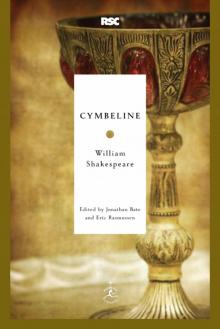 Cymbeline
Cymbeline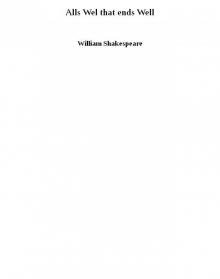 Alls Wel that ends Well
Alls Wel that ends Well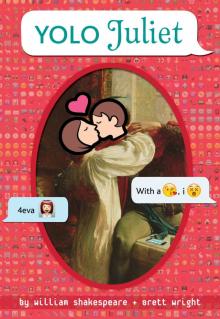 YOLO Juliet
YOLO Juliet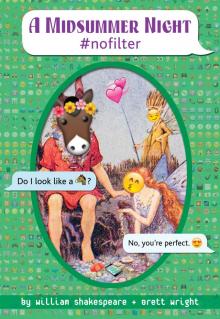 A Midsummer Night #nofilter
A Midsummer Night #nofilter Love's Labour's Lost
Love's Labour's Lost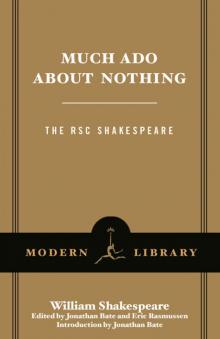 Much Ado About Nothing
Much Ado About Nothing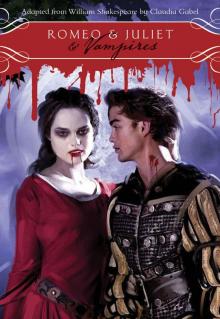 Romeo & Juliet & Vampires
Romeo & Juliet & Vampires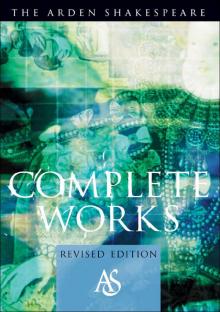 The Arden Shakespeare Complete Works
The Arden Shakespeare Complete Works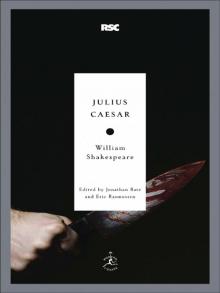 Julius Caesar
Julius Caesar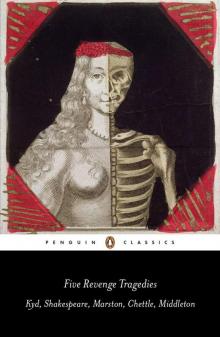 Five Revenge Tragedies: The Spanish Tragedy, Hamlet, Antonio's Revenge, The Tragedy of Hoffman, The Revenger's Tragedy (Penguin Classics)
Five Revenge Tragedies: The Spanish Tragedy, Hamlet, Antonio's Revenge, The Tragedy of Hoffman, The Revenger's Tragedy (Penguin Classics)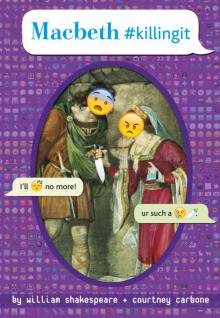 Macbeth #killingit
Macbeth #killingit The Oxford Shakespeare: The Complete Works
The Oxford Shakespeare: The Complete Works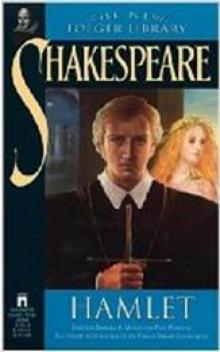 Hamlet, Prince of Denmark (Collins edition)
Hamlet, Prince of Denmark (Collins edition)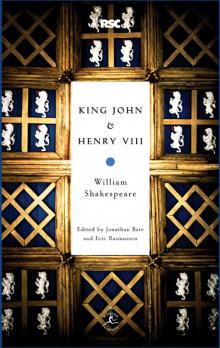 King John & Henry VIII
King John & Henry VIII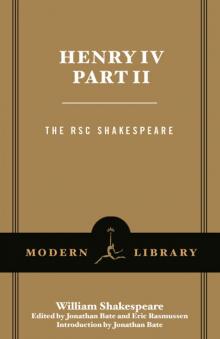 Henry IV, Part 2
Henry IV, Part 2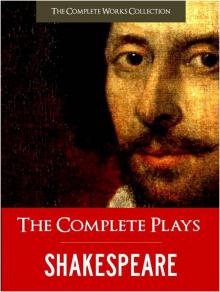 Complete Plays, The
Complete Plays, The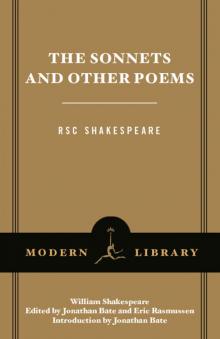 The Sonnets and Other Poems
The Sonnets and Other Poems Antony and Cleopatra
Antony and Cleopatra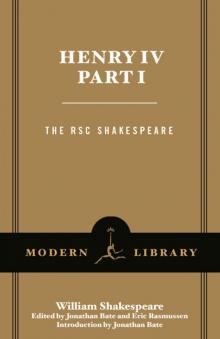 Henry IV, Part 1
Henry IV, Part 1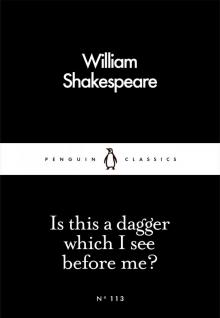 Is This a Dagger Which I See Before Me?
Is This a Dagger Which I See Before Me?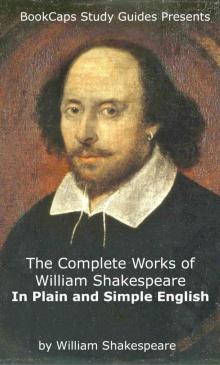 The Complete Works of William Shakespeare In Plain and Simple English (Translated)
The Complete Works of William Shakespeare In Plain and Simple English (Translated)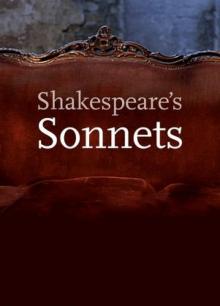 The Sonnets
The Sonnets